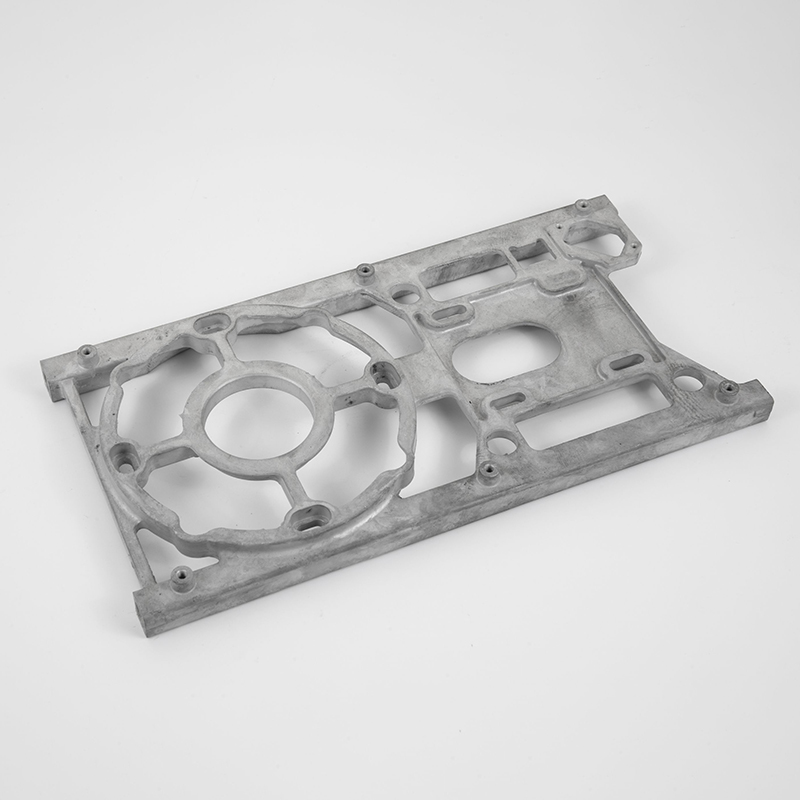

1. Porosity: Porosity is the presence of small voids or holes in the cast parts. It is caused by the entrapment of air or gas in the molten metal, which expands as the metal solidifies, leaving behind cavities.
2. Shrinkage: Shrinkage is the reduction in dimensions of the cast parts as they cool and solidify. It is caused by the natural contraction of the metal as it cools, and can result in parts that are out of tolerance.
3. Warping: Warping is the distortion or bending of the cast parts, which is caused by uneven cooling of the metal. It can result in parts that are not flat or straight, and can affect their performance.
4. Surface defects: Surface defects such as cracks, cold shuts, and flash can occur due to improper mold design, poor casting technique, or improper cooling of the metal. These defects can affect the strength and appearance of the parts.
1. Proper design of the mold and gating system can help to eliminate air entrapment and reduce porosity.
2. Optimizing the process parameters such as injection speed, die temperature, metal temperature, and pressure can help to reduce shrinkage and warping.
3. Use of vacuum or gas injection can help to improve the filling of the mold and reduce porosity.
4. Use of proper lubrication and mold release agents can help to reduce surface defects such as flash.
Ningbo Yinzhou Keming Machinery Manufacturing Co., Ltd. is a leading manufacturer of die casting machines and equipment. We offer a wide range of machines and accessories for various die casting applications. Our machines are well-known for their high quality, reliability, and performance. To know more about our products and services, please visit our website at https://www.kmcast.com. For any sales or service inquiries, please feel free to contact us at sale@nbkeming.com.
1. K. M. Sweet, et al. (2017). "Measurement and modeling of heat transfer in die casting." Journal of Materials Processing Technology, vol. 249, pp. 49-57.
2. H. Zhang, et al. (2018). "Numerical simulation and optimization of filling process in high-pressure die casting." Journal of Alloys and Compounds, vol. 746, pp. 1-9.
3. Y.-B. Ma, et al. (2016). "Effect of cooling conditions on the microstructure and mechanical properties of high-pressure die-cast Mg-3Al-1Zn alloy." Materials Science and Engineering: A, vol. 668, pp. 190-196.
4. J. Li, et al. (2019). "Effect of injection speed on the microstructure and mechanical properties of high-pressure die cast Mg-5Al-1Sn-1Zn alloy." Materials Science and Engineering: A, vol. 760, pp. 9-17.
5. C. Yin, et al. (2017). "Fatigue damage evolution and life prediction of high-pressure die-casting AZ91D magnesium alloy." International Journal of Fatigue, vol. 105, pp. 60-67.
6. P. K. Pandey, et al. (2018). "Friction stir processing of die-cast Mg alloys: Microstructure evolution and mechanical properties." Journal of Materials Processing Technology, vol. 250, pp. 373-382.
7. X. Wang, et al. (2016). "Effect of shot sleeve temperature on the performance of high-pressure die casting." Materials Science and Technology, vol. 32, pp. 1032-1037.
8. Y. H. Kim, et al. (2019). "Microstructure evolution and mechanical properties of friction stir welded high-pressure die cast magnesium alloy." Journal of Materials Science and Technology, vol. 35, pp. 44-50.
9. L. Wang, et al. (2017). "Effect of cooling rate on the microstructure, mechanical properties, and corrosion behavior of high-pressure die-cast AM60 magnesium alloy." Journal of Materials Engineering and Performance, vol. 26, pp. 1473-1482.
10. D. I. Kim, et al. (2018). "Effect of vacuum pressure on the properties of high-pressure die cast aluminum alloy." Metallurgical and Materials Transactions A, vol. 49, pp. 909-918.